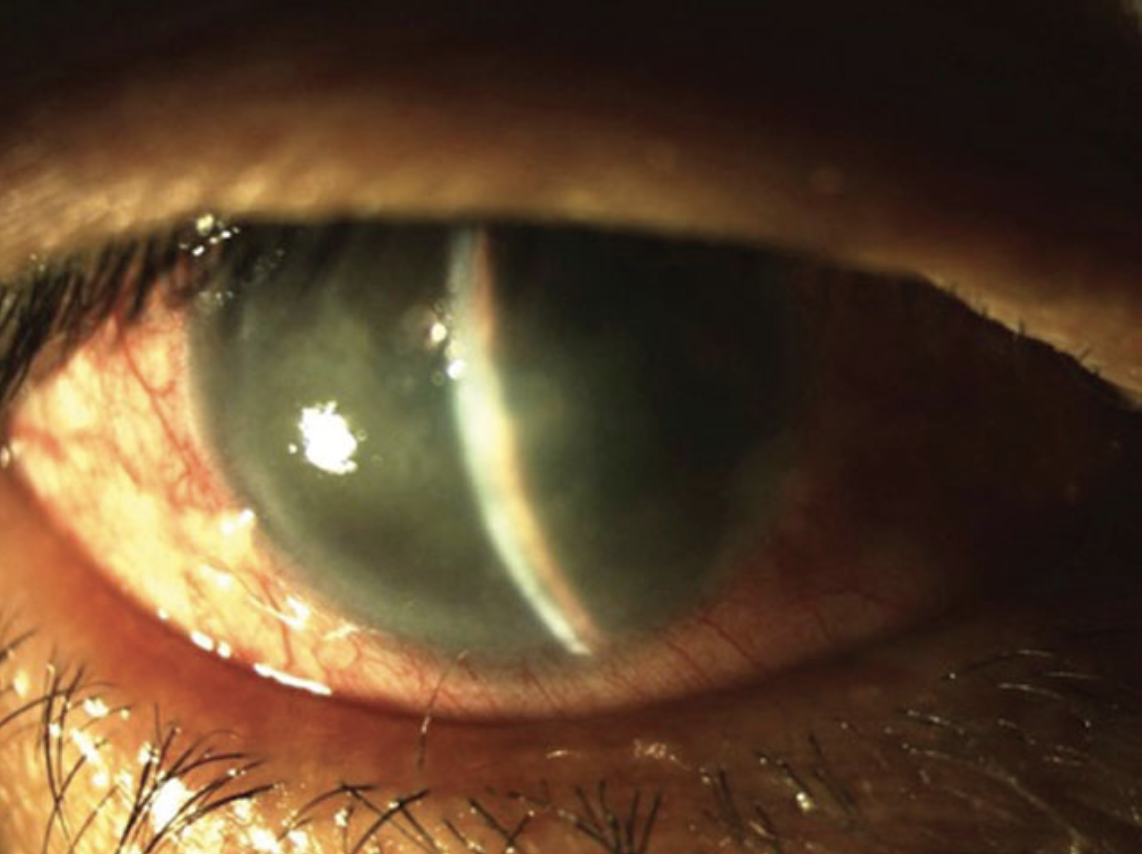 |
| New research helps to chart the connections between genetic status and one’s propensity to develop angle-closure glaucoma in hopes of developing clinical applications to aid screening of suspects and better recognize disease progression. Photo: Joseph W. Sowka, OD. Click image to enlarge. |
Various forms of glaucoma have been the subject of scrutiny for possible genetic predispositions, as uncovering such relationships might lead to future screening techniques that could help eye doctors identify suspects early and introduce preventive measures. Such tools are far from clinical application just yet, but researchers continue to chip away at the problem.
In a new JAMA Ophthalmology meta-analysis, researchers reviewed potential associations of common single-nucleotide variants (SNVs) and rare coding variants with primary angle-closure disease, its subtypes (including primary angle-closure glaucoma, primary angle-closure suspect and primary angle-closure) and likelihood of disease progression.
Studies providing analyzable genotype or allele data in a case-control design for primary angle-closure disease association and longitudinal case-only design for primary angle-closure disease progression were identified. SNV information was extracted from eligible reports and two genome-wide association studies summary statistics (UK BioBank and FinnGen).
The meta-analysis of this data revealed the associations of common SNVs in 15 genes or loci with primary angle-closure disease and 13 genes or loci with primary angle-closure glaucoma. It also cataloged rare coding variants in 16 genes or loci associated with primary angle-closure glaucoma and revealed a scarcity of genetic studies on primary angle-closure glaucoma progression. “Notably, the genes harboring those common and rare variants did not overlap and most of the associated genes were different between Asian and European individuals, suggesting the genetic complexity of primary angle-closure disease and primary angle-closure glaucoma and possible ethnic diversities,” the researchers explained in their paper for the journal.
Only one SNV (rs1258267) showed substantial association with primary angle-closure glaucoma, and two did (rs1258267 and rs11024102) with primary angle-closure disease. Although both showed only limited evidence of biological relevance, the association summarized from multiple populations suggested these SNVs may be genetic biomarkers for glaucoma risk assessment, the authors noted.
There was overlapping of genes between primary angle-closure disease and other glaucoma subtypes, including primary open-angle glaucoma and exfoliative glaucoma, suggesting that they might share some genetic markers or even pathways. “Therefore, further functional characterization of selected genes located in these six loci may shed new lights on the pathogenesis of different glaucoma subtypes,” the authors noted.
Liang YJ, Wang YY, Rong SS. Genetic association of primary angle-closure disease. A systemic review and meta-analysis. JAMA Ophthalmology. March 28, 2024. [Epub ahead of print.] |


